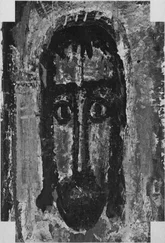Francois-Xavier Meunier - Dual Innovation Systems
Здесь есть возможность читать онлайн «Francois-Xavier Meunier - Dual Innovation Systems» — ознакомительный отрывок электронной книги совершенно бесплатно, а после прочтения отрывка купить полную версию. В некоторых случаях можно слушать аудио, скачать через торрент в формате fb2 и присутствует краткое содержание. Жанр: unrecognised, на английском языке. Описание произведения, (предисловие) а так же отзывы посетителей доступны на портале библиотеки ЛибКат.
- Название:Dual Innovation Systems
- Автор:
- Жанр:
- Год:неизвестен
- ISBN:нет данных
- Рейтинг книги:4 / 5. Голосов: 1
-
Избранное:Добавить в избранное
- Отзывы:
-
Ваша оценка:
- 80
- 1
- 2
- 3
- 4
- 5
Dual Innovation Systems: краткое содержание, описание и аннотация
Предлагаем к чтению аннотацию, описание, краткое содержание или предисловие (зависит от того, что написал сам автор книги «Dual Innovation Systems»). Если вы не нашли необходимую информацию о книге — напишите в комментариях, мы постараемся отыскать её.
Dual Innovation Systems — читать онлайн ознакомительный отрывок
Ниже представлен текст книги, разбитый по страницам. Система сохранения места последней прочитанной страницы, позволяет с удобством читать онлайн бесплатно книгу «Dual Innovation Systems», без необходимости каждый раз заново искать на чём Вы остановились. Поставьте закладку, и сможете в любой момент перейти на страницу, на которой закончили чтение.
Интервал:
Закладка:
– the second involves the simple consideration of the presence of spillovers as a corollary of the absence of duality:Particular research is done exclusively in one domain and adapted more or less without change in others. The existence of spillovers, therefore, is not evidence of duality, and might in fact be evidence of its absence. Thus, promotion of spillovers can be viewed as a policy designed to correct the ‘duality’ failure of a program of R&D. (Cowan and Foray 1995, p. 852)
According to this perspective, duality resides in the joint civilian–military design of knowledge. In this case, duality is an input data of technological change; it involves an evolution, if not identical, at least compatible with the technical characteristics of civilian and military applications.
This being said, a certain number of works have been conducted which indicate that the border between the two sectors is highly porous to knowledge. Three key stages in the research enable the progress toward a method for systematic knowledge analysis in duality. The first stage is that of studies conducted at the company level, according to which the sources of knowledge employed by defense companies are both defense and civilian companies (Chakrabarti et al. 1993). The second is that of studies at the technology level, which try to track all the links between knowledge produced in the defense field and that produced in the military field (Acosta et al. 2011, 2013, 2017). They pay particular attention to spillovers, as is the case for Japan, in the work of Chinworth (2000a). Finally, one article proposes to lay the bases for a systematic study of knowledge by means of patents. This study does not rely on a view of knowledge duality in terms of spillovers, but in terms of similarity in knowledge production, otherwise put, a cognitive proximity between the civilian field and the defense field. In that respect, it is in agreement with case studies that try to identify similarities and differences between civilian research and defense research in various technological domains (Lapierre 2001). Hence, this analysis is close to the above-mentioned second perspective, according to which, instead of being characterized by transfers, duality is characterized by a potential joint production of knowledge and it advances a shared foundation used by both parts (Meunier and Zyla 2016).
In addition to knowledge composing defense technologies, the complexity of these systems contributes to obscuring the link between civilian innovation and defense innovation. During World War II and in the decades after it, arms programs grew in complexity. The hydrogen bomb, fighter jets and ballistic missiles are examples that prove this dynamics. In order to develop these complex technologies, those who designed these programs needed to develop new system engineering knowledge for a better integration of these technologies in a homogeneous system (Sapolsky 2003).
Defense systems lost none of their complexity. They combine many components that are hierarchically organized to produce an integrated operational system. They are often referred to as Complex Product Systems (CoPS) (Prencipe 1997; Hobday et al. 2000, 2005) because of the significant number of components, knowledge depth and competences to be implemented, as well as the production of new knowledge required by their development (Hobday 1998).
In the face of this complexity, two types of knowledge can be distinguished: one related to system architecture and the other to components (Henderson and Clark 1990). This distinction is essential when studying duality (Mérindol 2010). Indeed, while complex systems emerged in the military field, they then spread to civilian sectors, driving the development of competences in the field of system integration. From then, it was possible for the civilian and military sectors to share knowledge on the technological components as well as system engineering. Consequently, the observation of duality became even more difficult and subtle.
Nevertheless, this way of assessing whether duality between two knowledge systems is related to one of the knowledge components shared by two systems, or to two systems relying on the same knowledge architecture, is not trivial. On this subject, contemporary literature points out that the specificity of knowledge in the defense field is more often at the system architecture level than at the component level (Lazaric et al. 2011). In other terms, defense systems combine technologies that, taken individually, are used by both defense and civilian sectors, but associate them in an original manner.
This distribution of knowledge between defense and civilian sectors obviously evolves depending on the various technical systems developed and on the innovations they generate. A proper understanding of duality requires the consideration of temporal dynamics. Duality should be considered at the very beginning of a product life, namely during the research phase, and should obviously stop during the development phase (Gagnepain 2001).
Given that duality is not a constant phenomenon, then the period, phase and moment during which it is manifest should be identified. Alic et al. (1992) offer a first macrolevel approach of this dynamics explaining, for semiconductors, the reversal of the direction of spin-offs between the civilian and military sectors by the domination of military demand in the 1980s and, afterwards, by a domination of civilian demand. This made the military sector dependent on civilian innovation, as it is the latter that mainly directs R&D efforts in this field.
In the 1990s, Foray (1990) and Chesnais (1993) noted a transformation in the relation between civilian R&D and military R&D. Foray highlighted the weakening of the role of military R&D in the increase of industrial productivity and pointed out the following two factors:
– the distortion of the scientific and technical system related to the technical specificities of the military material. As such, they highlighted the operational nature of R&D programs financed by defense, which favors the development expenditure as well as a strong product instead of process orientation of these programs;
– the end of the four types of spin-offs identified by Mowery and Rosenberg (1991): direct effects (commercial application of technologies directly issued from defense), second-order effects (only one part of technology is embedded, either in a material form or as knowledge), effects related to research (reflected in knowledge dissemination) and organizational effects (for example, through a community of researchers); these disappear with the end of the generic nature of technologies.
Based on this observation, Foray recommends two organizational transformations: on the one hand, organizing the increasing dependence of military technology on civilian R&D and, on the other hand, promoting the idea of defense financing for civilian programs, as a guarantee for their development. In the particular case of France, the upstream study programs are presented as one of the means of “insertion of defense R&D policies in global technological policies” (Foray and Guichard 2001). It is the interaction of these programs with the other devices that should be considered, in view of its role as an instrument of duality.
Besides these long-term dynamics, a microanalysis facilitates the understanding of short-term dynamics. From an evolutionary perspective, the dual potential of a technology varies in time, and also depends on the type of R&D program (Cowan and Foray 1995).
First, the time variation: the notion of a technology lifecycle (Utterback and Abernathy 1975; Abernathy 1978) highlights two phases (experimentation then standardization) during which the dual potential evolves. The experimentation phase has the highest potential, while standardization brings down dual potential. Indeed, during the experimentation phase, potential applications of technology are not yet clearly identified, and therefore they may appear interesting to both civilians and militaries. But jointly conducted research may speed up the timetable; this means that actors in the defense sector and those in the civilian sector conduct tests together and thus accelerate the technology maturing process. They can also save time in terms of the “event”, by conducting a higher number of tests before the standardization phase. Thus they reach a higher level of technology maturity within the same lapse of time (Cowan and Foray 1997).
Читать дальшеИнтервал:
Закладка:
Похожие книги на «Dual Innovation Systems»
Представляем Вашему вниманию похожие книги на «Dual Innovation Systems» списком для выбора. Мы отобрали схожую по названию и смыслу литературу в надежде предоставить читателям больше вариантов отыскать новые, интересные, ещё непрочитанные произведения.
Обсуждение, отзывы о книге «Dual Innovation Systems» и просто собственные мнения читателей. Оставьте ваши комментарии, напишите, что Вы думаете о произведении, его смысле или главных героях. Укажите что конкретно понравилось, а что нет, и почему Вы так считаете.











